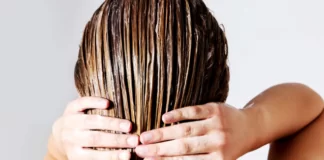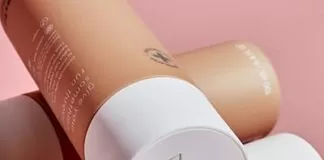All You Need To Know About Low Porosity Hair
One could say the hair care task is a lifelong journey. Our hair waxes and wanes with the seasons, the different products, styles and chemicals we use to keep it looking closer to the way we always dreamed of. As knowledge about hair composition and how certain ingredients interact with it, we’ve been drawn to pay a closer look at hair porosity and its impact in overall hair health and capabilities. Porosity is the quality that makes hair prone to absorb moisture. This process is controlled by something called hair cuticles, which are basically small pores each strand has to let in or out water and oils.
1What Is Low Porosity Hair

Low porosity hair sits on the lower tier of water absorption capabilities. Whether its from genetic disposition or years of manipulation, low porosity hair has a hard time humectant and keeping in moisture that it draws from water and other substances. People with low porosity hair will often talk about how conditioners just “sit” on their hair, without no feeling of the product softening the hair or making it more manageable.
Low porosity hair that hasn’t been taken care off properly will feel dry, brittle and weighed down. It is also common to see buildup and dandruff come around with low porosity hair.
But fear not! If you’re struggling to figure out why your hair remains in this undesirable state, we’ve compiled everything you need to know to make it bounce back in full glory,
2Hair Porosity Test

The first thing you need to do is be completely sure your hair, or most of it at least, is in fact low porosity. There are at least three discussed methods to diagnose low porosity hair, we’ll explain them all here and tell you our favorite.
All three tests begin will fresh clean hair that has been washed with a clarifying shampoo. As we said earlier, low porosity hair is quite prone to buildup, so the cuticles might be clogged from old product:
- Water glass test: Pick a clear glass of water and drop a single, clean strand of hair in it. Let 5 minutes pass without moving the glass or altering it in any way and look where your hair sits. If it’s still floating after 5 minutes: Welcome to low porosity hair!
- Moisture test: Pick a section of your hair (clean, clarified, no extra product) that has dried out and re-hydrated with a splash bottle. If the water beads up and sits on top of your hair, you have low porosity hair.
- The slide test: Pick a single hair strand and try to feel your fingertips from the tips to the roots how smooth or bumpy your hair is. Smooth, sleek feeling hair is low porosity hair.
3Low Porosity Hair Characteristics

Here are 6 characteristics the will help you verify if your hair is in fact low porosity:
- You can wait forever for your hair to dry: Maybe you’ve tried heat less twists outs or flexi rods to very little joy and high disappointment. Your hair will not dry own its own in a decent amount of time.
- Product just “sits” on your hair: No matter how creamy, slick, or high quality your chosen conditioners and leave-ins are, your hair seems to let them be close but never let them in.
- It takes a lot of water to get your hair wet.
- No bounciness, no movement: No matter what you do your hair will you lay flat and lifeless whenever you use the conventional tips and tricks for styling (LOC method and the like)
- It feels dry, but it’s still shiny: Shine is a common feature of low porosity hair, as flat cuticles reflect light best, however, your hair will still feel dry and crunchy after conditioning.
- Poor reaction to protein treatments: You probably know the feeling. After applying a conditioner with high protein your hair is stiffer than ever, no matter what you do afterwards.
4How To Care For Low Porosity Hair

- We’ll start with the cornerstone: Water. Low porosity hair needs to be cared for with products formulated with a higher water rate. Humectant ingredients, over sealants and
proteins is the campaign slogan to get your hair healthy. - Diluting is a must. When using conditioners and leave-ins, adding extra water or
aloe Vera juice will boost the penetrating capacity of your products. - Use some form of heat every time you deep condition. Starting with warming up your products in a microwave safe container, up to a heated cap or a steamer, most low porosity hair won’t get any benefits from deep conditioning unless heat is involved. The reason? Heat promotes the opening of the hair cuticle, allowing ingredients to penetrate easier.
- Another important note on deep conditioning: apply conditioner on damp, not drenched hair. Since your strands are only capable of absorbing a limited amount of moisture at the time, its best to squeeze away some water before applying your products.
- When styling, you can still benefit from the sealing and emollient benefits of oil, however, always choose lightweight oils for low porosity hair. A list of lightweight oils
include jojoba, grape seed, avocadoand sweet almond oil. - Some natural ingredients can be of great assistance for reducing buildup and dryness in your hair and scalp. Every couple of weeks rinse your hair with a mixture of water and apple cider vinegar or green tea to keep buildup at bay.
- You’ll invest wisely if you pick a good clarifying shampoo to use every month or so, depending on how often you style and apply styling products to your hair.
5Things To Avoid With Low Porosity Hair

Here’s a short list of practices and ingredients you should avoid helping your low porosity hair’s health:
- Lower pH shampoo and conditioners
- Leave-ins and conditioners with non-soluble silicons
- Leave-ins and conditioners with protein
- Dense oils such as Black Castor oil, coconut oil or olive oil
- Butters and creams made out of butters
- Direct heat styling
6LOC Method for low porosity hair

When redesigning your hair care routine according to your hair’s porosity, the steps after deep conditioning are the ones who might suffer the most modifications. The LOC method that stands for Leave-in — Oil — Cream, usually won’t work its best with low porosity hair. Applying oils as the second step can seal the hair cuticle for good, and added step of cream or butter won’t penetrate the hair and just sit on top, giving the hair a greasy — or worse, flaky- look that can get you in your feelings.
The LOC method for low porosity hair must be adjusted to incorporate more moisture and fewer sealants. You can start by trying out the LCO order: first leave-in, then cream, then oil. The second adjustment in order is, as mentioned above, replacing heavy oils with lighter oils such as jojoba. The third -and potentially life-changing modification, is to forgo the cream entirely and finish up with a purely styling product that is not butter based.
On that third modification, you can consider is combining your oil with a natural gel: Aloe
7Best Low Porosity Hair Products

Yes, you were blessed with a special kind of hair that requires some extra loving, care and attention, but that’s no reason to panic. We’ll help you choose the right products for restoring health to your low porosity hair
8Best shampoos for low porosity hair

When shopping for shampoo for low porosity hair, keep in mind you want to always provide extra moisture to your hair. Sulfate-free hydrating shampoos are your best choice, while clarifying shampoos will help you get rid of buildup so that moisturizing products can do their work.
For deep cleansing and clarifying we recommend EDEN BodyWorks Peppermint Tea Tree Clear Shampoo, Mixed Chicks Gentle Clarifying Shampoo and OUIDAD Water Works Clarifying Shampoo. When your hair is in need of deeper moisture, then Kinky Curly Come Clean Natural Moisturizing Shampoo is an amazing choice.
Avoid shampooing your hair more than twice and over two times a week, even sulfate-free shampoos can have a drying effect on your hair. If you are committed to your current shampoo bottle before getting a new one, try a warm oil pre-shampoo treatment, massaging your scalp and hair with warmed up oil and letting it sit for 20 minutes before proceeding to wash.
9The Best Conditioner for Low Porosity Hair

Aloe Vera, honey, coconut water or milk, all moisturizing ingredients you can think of must be at the first to lines of ingredients to be low porosity hair compatible.
We like the flexibility and softness earned while using Oyin Handmade Honey Hemp Conditioner (Extra points for the smell and great detangler!), DevaCurl One Condition Original, not a deep conditioner so it has a lighter consistency so you can use it on shorter intervals. As a leave in conditioner Jane Carter Solution Revitalizing Leave-In Conditioner is the perfect combo: lightweight, heat protectant, and perfect for daily up keep of moisture without adding extra buildup!









